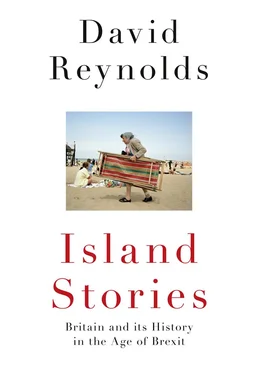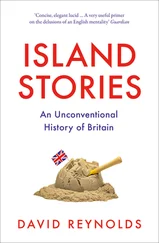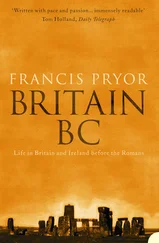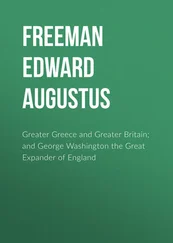Henry VIII’s break with Rome began for very personal reasons: his desire for the Papacy to annul his barren marriage in the hope of producing a legitimate male heir with his latest infatuation, Anne Boleyn. When the Pope refused to grant him a divorce from his wife Catherine of Aragon, Henry set himself up as ‘supreme head’ of the English church and then, seizing on the convenient ideas of anti-clerical reformers, his regime attacked the institution of monasticism and dissolved all the religious houses, owners of about a third of the land in England. Instead of prudently managing those assets, however, Henry flogged them for ready cash to pay for an ego-trip bid to regain England’s lost French empire. The war of 1544–6 was a costly disaster and England’s incremental Protestant Reformation left the country increasingly exposed in Counter-Reformation Europe.
The 1550s proved a critical turning point, defined by the accidents of gender and mortality. Henry died in 1547. His young son Edward VI was an ardent Protestant, eager to promote his faith, but he died – probably of tuberculosis – in 1553, aged 15. Anticipating his death, Edward tried to ensure a Protestant succession by willing the Crown to his cousin, Lady Jane Grey. But her reign lasted only nine days before Mary, Catherine of Aragon’s daughter, was installed on the throne. A staunch Catholic, committed to extirpating Protestantism, Mary married the heir to the Spanish throne, who became King Philip II in 1556. This placed England on the other side of Europe’s wars of religion. But then in 1558, Mary died aged 42, possibly from cancer of the uterus. She was succeeded by her half-sister Elizabeth – the daughter of Anne Boleyn, who was then 25. Given the fate of her siblings, few would have predicted at her accession that Elizabeth would reign for nearly 45 years. In 1562, for instance, she contracted smallpox and seemed close to death. Her fortuitous longevity proved to be of huge historical significance.
Elizabeth was a firm but cautious Protestant. Both those adjectives mattered: she secured the Reformation but did not allow religion to divide the country as happened in France. Equally important, in 1559–60 Scotland’s anti-Catholic nobles expelled the French and established a Protestant regime. What ensued has been described as ‘the greatest transformation in England’s foreign relations since the start of the Hundred Years’ War’ – making ‘an ally of England’s medieval enemies the Scots, and an enemy of its medieval allies the Burgundians’ whose possessions in the Netherlands had now passed to Philip of Spain. [14] Конец ознакомительного фрагмента. Текст предоставлен ООО «ЛитРес». Прочитайте эту книгу целиком, купив полную легальную версию на ЛитРес. Безопасно оплатить книгу можно банковской картой Visa, MasterCard, Maestro, со счета мобильного телефона, с платежного терминала, в салоне МТС или Связной, через PayPal, WebMoney, Яндекс.Деньги, QIWI Кошелек, бонусными картами или другим удобным Вам способом.
What’s more, France and Spain finally made peace in 1559 after nearly seven decades of periodic conflict, freeing Philip to concentrate on his mission of rolling back the Reformation.
In 1567 the Duke of Parma began a ruthless Spanish campaign to suppress the Protestant-led rebellion in the Low Countries; in 1572 thousands of French Protestants were killed in what became known as the Saint Bartholomew’s Day Massacre. At home Elizabeth, pressed by her advisers, turned on recalcitrant Catholics as potential traitors; abroad she began to aid the Dutch revolt in the interests of national security. This escalating confrontation with Spain climaxed in Philip’s abortive invasion in July 1588 – which was defeated not so much by English naval prowess as by the fabled ‘Protestant wind’ that prevented the Spanish Armada from linking up with Parma’s army in Flanders and instead drove the sailing ships into the North Sea. A third of the original 130 vessels did not make it around Scotland and home to Spain.
From these years of fevered insecurity, when regime and religion both seemed to hang in the balance, there emerged a new national ideology. Rooted in providentialist interpretations of recent history, it depicted the English as a staunchly Protestant nation, blessed by God’s protection. An intellectual landmark was John Foxe’s Actes and Monuments of these Latter and Perillous Days, Touching Matters of the Church – popularly known Foxe’s Book of Martyrs because it was a collection of stories – some true, others little more than rumour – about Christian martyrs, mostly anti-Catholic. Foxe had started compiling his work in Latin, while exiled on the Continent during Mary’s reign. Returning to England in 1559, soon after Elizabeth acceded to the throne, he was quickly taken under the wing of her principal adviser, William Cecil, who put Foxe in touch with the printer John Day, persuaded him to publish in English and also helped finance what was a truly massive project – the biggest book printed in England to date. The first edition, which appeared in 1563, ran to 1,800 pages, lavishly illustrated with 60 woodcuts; the second, in 1570, filled 2,300 pages – more than two million words – in two volumes, with 150 illustrations. Over the course of Elizabeth’s reign five editions were published; four more followed during the seventeenth century; and abridged versions, in cheap instalments, were printed throughout the eighteenth century – carrying Foxe’s message to a new and much wider audience. [15] Конец ознакомительного фрагмента. Текст предоставлен ООО «ЛитРес». Прочитайте эту книгу целиком, купив полную легальную версию на ЛитРес. Безопасно оплатить книгу можно банковской картой Visa, MasterCard, Maestro, со счета мобильного телефона, с платежного терминала, в салоне МТС или Связной, через PayPal, WebMoney, Яндекс.Деньги, QIWI Кошелек, бонусными картами или другим удобным Вам способом.
‘The Double Deliverance’: Samuel Ward’s print, published in Amsterdam in 1621 and widely distributed. In the centre the Pope and a Spanish grandee (King Philip II?), with advisers including the Devil, plot England’s destruction. Left: the Armada of 1588 is blown away by the wind from Heaven. Right: Guy Fawkes prepares his deadly plot but the all-seeing Jehovah smiles on his chosen people in England. [16] Конец ознакомительного фрагмента. Текст предоставлен ООО «ЛитРес». Прочитайте эту книгу целиком, купив полную легальную версию на ЛитРес. Безопасно оплатить книгу можно банковской картой Visa, MasterCard, Maestro, со счета мобильного телефона, с платежного терминала, в салоне МТС или Связной, через PayPal, WebMoney, Яндекс.Деньги, QIWI Кошелек, бонусными картами или другим удобным Вам способом.
This providentialist sense of the English as a Chosen People – like the Israelites of old – became enshrined in the national calendar. Particularly significant in English national memory was what preacher Samuel Ward called in 1621 the nation’s ‘double deliverance’ from ‘the invincible navie’ and ‘the unmatcheable powder treason’ – in other words, from the Armada of 1588 and the Catholic plot to blow up king and parliament in 1605. The failure of both were depicted as acts of divine intervention.
Читать дальше












